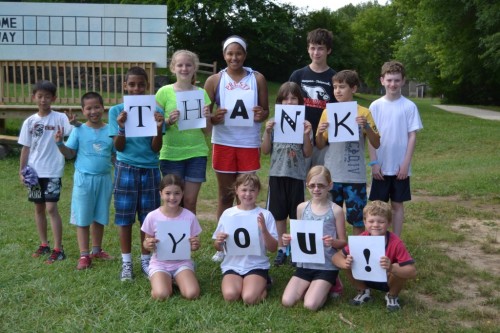For the longest time I avoided giving gift cards as presents. It seemed like such an impersonal gesture. I had visions of the recipients stuffing all their newly acquired gift cards into their wallets and heading off to the mall without a single thought as to who gave them what card or attaching any kind of significance or meaning to them other than the dollar value encoded on the magnetic strip.
My thinking on this shifted last week when I received two thank you notes for recently-given gift cards. Instead of confirming my fear that a gift card would be spent and soon forgotten, both told me how they used my card in a way that was special to them. One described the wall hanging she bought with the card to decorate her dorm room next fall. The other said she purchased perennials to plant around her new home. I was surprised how much I appreciated knowing specifically how they used the gift card I gave them.
I can’t help wondering if my trepidation about the impersonal nature of gift card giving isn’t similar to how some donors feel when they make a financial contribution to a nonprofit organization. Research indicates that donors want to know their gift is appreciated, and especially whether it really made a difference or whether it had any special significance to the cause.* In fact, donors surveys have indicated that being thanked and getting information about how their gift was used and what impact it had was so important that it influenced whether they would make another contribution to that particular organization.
The implication of this information is significant for nonprofit leaders. If you want to retain your donors (and who doesn’t?), you need to put as much (or more) time and effort communicating with them AFTER they make their contribution as you put into acquiring that gift in the first place.
“It takes more time to keep donors informed of what their money is achieving than it does to ask them for it.”
Penelope Burk, “Donor Centered Fundraising”
With an already-full workload, how can you make this type of donor communication (and relationship building) a systematic priority? Here a few ideas to consider:
- Share the responsibility – Consider organizing a board/volunteer “donor follow-up” or “relationship-building” committee. Develop your leadership staff by giving them opportunities to take responsibility for communicating and nurturing relationships with a handful of donors. Set up systems to help front-line staff collect and share impact information, stories and outcomes that can be shared with donors throughout the year.
- Show rather than tell – Use photos, videos, and stories to help donors see people in the program they supported or the progress of construction on a capital project.
- Create experiences – Ask donors to visit program sites so they can see and talk with those who have benefited from their gift. Hold your big events at program sites rather than impersonal hotels or conference centers. Or seat your members or clients at your big events strategically at tables with donors.
 YMCA Camp Minikani campers created very special thank you’s for a donor event.
YMCA Camp Minikani campers created very special thank you’s for a donor event.
Nonprofit leaders have so many compelling stories about how donations make it possible for their organization to make the world a better place. Most of them do a great job telling those stories when they are asking for contributions. However, making it a priority to tell those stories after a gift has been made can greatly impact the quality of their donor relationships and influence the success of the next “ask.”
Please share with us ways you show appreciation to your donors and how you let them know that their gifts are significant and make a positive impact in the world.
*2011 Donor Survey, Cygnus Applied Research, Inc./Burk & Associates LTD

